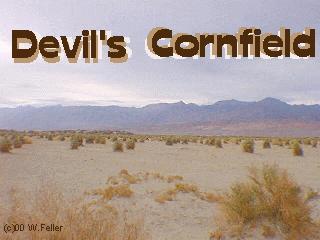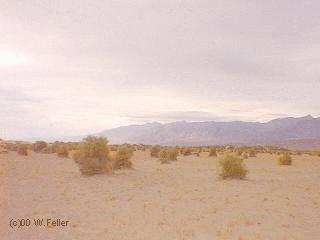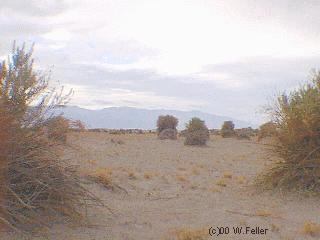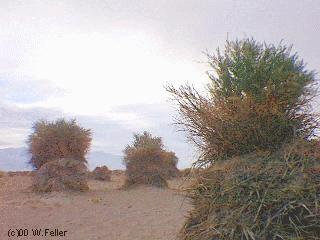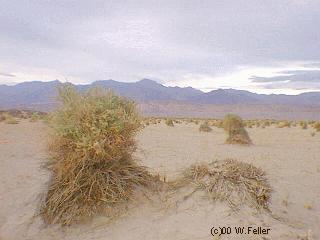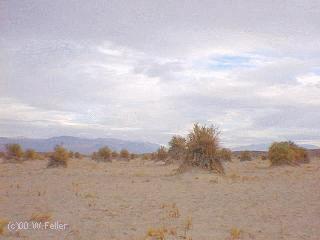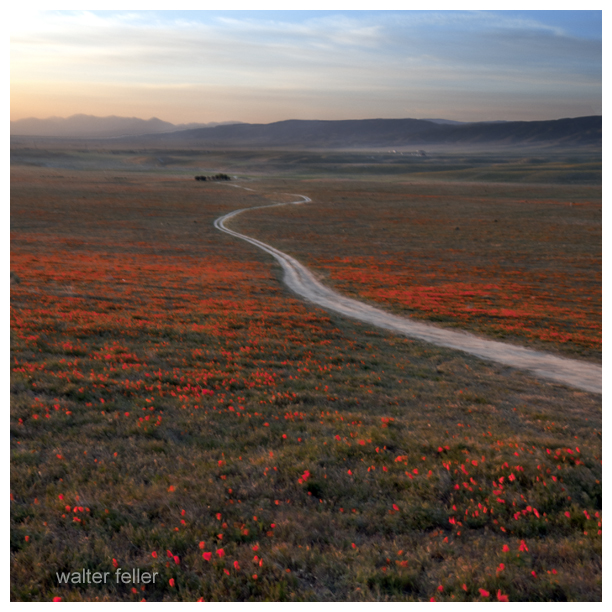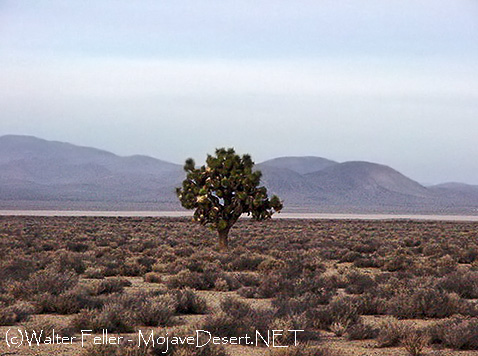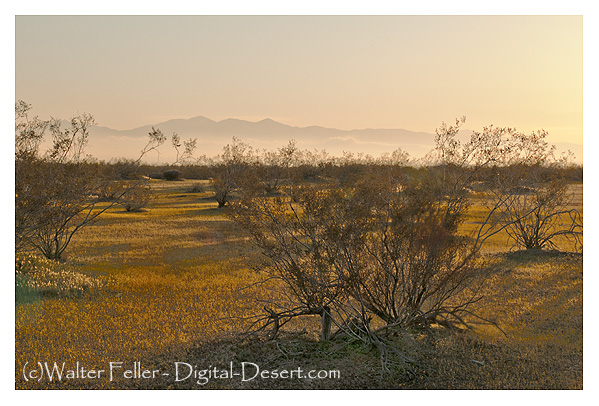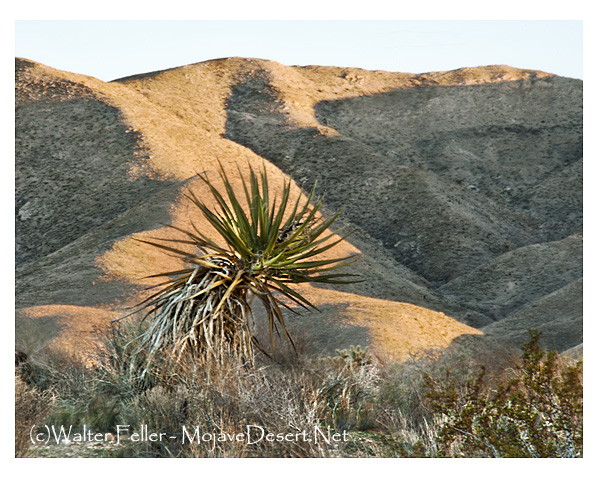Devil’s Cornfield (Digital-Desert)
Category: Plant Life
Wild Parties
It was crowded. It was colorful. It was riotous. It was like everybody brought their brother and his friends. When wildflowers have their wild parties everyone looks their best when they show up.

Wildflowers
Ver:
Beautiful memories of beautiful moments — I was there the day the valley floor was being painted. Each brushstroke was evenly pulled across the plain as the sun rose and the day grew warm. The colors covered everything with life. There were bugs and brightly detailed butterflies and the creatures that eat them. There were the diminutive blue and pink fairies that made it all worth living for and meek mice, humble hares (although no one seems to remember one in particular), rats underground and birds that flew higher than could be seen, and then there were the birds that flew in between.
Rats. Rats were everywhere–typically.
Ver (Latin)- very, new, truth, life, forward . . .
‘verdant’ meaning green and growing and ‘veritas’ or truth.
24 Consider the ravens: They do not sow or reap, they have no storeroom or barn, yet God feeds them. And how much more valuable you are than birds! 25 Who of you by worrying can add a single hour to your life? 26 Since you cannot do this very little thing, why do you worry about the rest?
— luke 12:24-26
Cottonwoods with Character
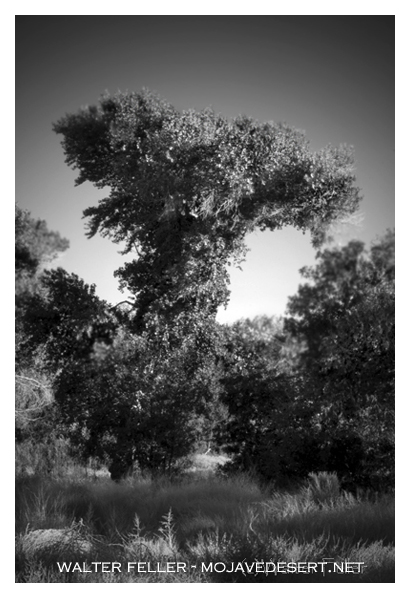
Beware of the ‘TREENADO!’
Mojave River, Victorville, Ca.
A Striking Image
A survivor yucca grows out of a cleft appearing to be damaged from a high-speed contact. Taken during the last sliver of direct sunlight of the day. I thought the little shrub exquisite and beautiful. The granite, reddish and perfect–the light was a shear veil laid like a blessing. All the way from my birth and experiences and all the way from the time before time began when the stone was born and born again and again under oceans and earth and heat and wear. All the way from then through the life of the thing, growing its spikes like crazily splashed slashes of bold green paint contrasted on a red canvas, its sacred moment, its peak of existence. Pause, then slowly, deeply, exhale.
Wilderness Areas and Ecological Subsections
Example: (see below for links to lists applicable to this index map)
Wilderness Area #34 Bigelow Cholla Garden Wilderness
is located approximately within;
Subsection 322Am – Piute Valley – Sacramento Mountains
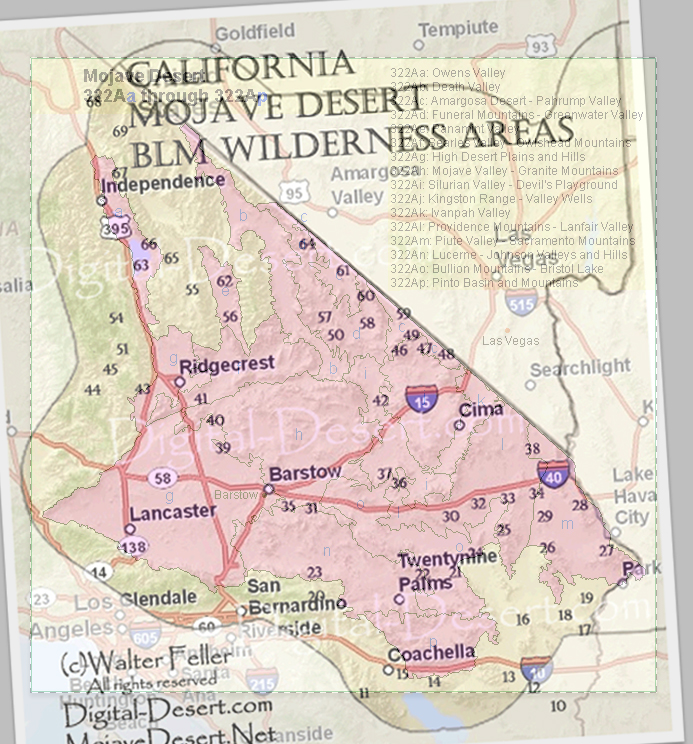
Ecosubsections
BLM Wilderness Areas
Joshua Tree
Mojave Desert Plants: Trees Joshua Tree
BOTANICAL AND ECOLOGICAL CHARACTERISTICS
SPECIES: Yucca Brevifolia (Joshua Tree)
GENERAL DISTRIBUTION
Joshua tree is one of the most characteristic plants of the Mojave Desert and extends southward to the Mojave-Sonoran Desert ecotone. This species grows from southern California, Mexico, and western Arizona eastward into southern Nevada and southwestern Utah.Var. brevifolia reaches its greatest abundance in the vicinity of Joshua Tree National Park; California. var. jaegeriana grows primarily in the eastern portion of the Mojave; var. herbertii is restricted to parts of the western Mojave Desert in California.The Joshua tree was named after the biblical leader, Joshua, as it reminded the Mormon pioneers of the hero raising out-stretched arms toward the heavens.William Lewis Manly referred to them as “cabbage trees” in his book (Death Valley in ’49), about the rescue of the Bennett and Arcane families from Death Valley.Pedro Fages, in his expedition along the edge of the Mojave searching for deserters from the Spanish Army, called the ungainly trees “palm” trees.
Source: Joshua Tree
Nurse Plant
Nurse plants are species that help other plants grow by providing shelter and a safe microhabitat for seed germination and seedling growth beneath their canopy.
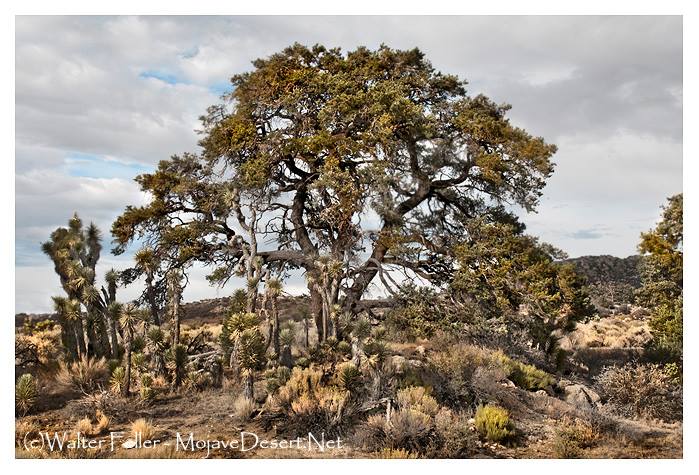
Pinyon pine shelters Joshua trees
Nurse plants are species that help other plants grow by providing shelter and a safe microhabitat for seed germination and seedling growth beneath their canopy.
In some higher-elevation parts of the Mojave Desert and nearby transition zones, pinyon pines (Pinus monophylla) can act as nurse plants for young Joshua trees (Yucca brevifolia).
Here’s how that works:
- Shade: The pinyon pine casts shade that protects Joshua tree seedlings from intense sunlight and reduces water loss.
- Temperature moderation: That same shade keeps the soil cooler during the day and warmer at night, helping the seedling avoid temperature extremes.
- Wind break: The pine also acts as a wind shield in areas where strong, drying winds can damage or desiccate seedlings.
- Moisture retention: The pine’s canopy helps trap moisture in the soil, creating a slightly more humid microenvironment.
This relationship is most likely to happen in ecotones—zones where desert and woodland environments overlap, such as parts of the Mojave’s upper slopes and sky islands. In these zones, both Joshua trees and pinyon pines can coexist, and the older pines sometimes help give the slow-growing Joshua trees a head start.
It’s a subtle but meaningful example of cooperation in nature, especially in a place as tough as the desert.
Aphid Loaf

I have heard the Indians would go to the reeds in the riparian areas where aphids fed in large numbers, brush away the tiny bugs and scrape their shiny-sticky waste from the blades. En masse the material would be shaped into a large, heavy loaf with a hardness and sweetness similar to rock candy. In Jedediah Smith’s first expedition across the Mojave his guides recovered a cache of the sweet bread to supplement their then meatless diet.
“But men accustomed to living on meat and at the same time travelling hard will Eat a surprising quantity of corn and Beans which at this time constituted our principal subsistence.”
~ J.Smith, 1826
Illustrator of Mojave Desert flora
Henry R. Mockle (1905-1981),
Illustrator of Mojave Desert flora
Rather than documenting the structure of each plant species in scientific detail, Henry Mockle intended his illustrations to capture “the pleasurable feeling at coming up on one of these little creations”.
As did naturalist Edmund Jaeger, Mockle took pride in all his studies of desert plants being taken directly from life. This work often involves lying on the ground for hours, in conditions ranging from hot to cold, windy to wet. As some annual plants – like the Phacelia – per growing up and through the protective spread of woody shrubs. Mockle found he had to lay beneath creosote bushes and other scrub vegetation to depict these wildflowers in full.
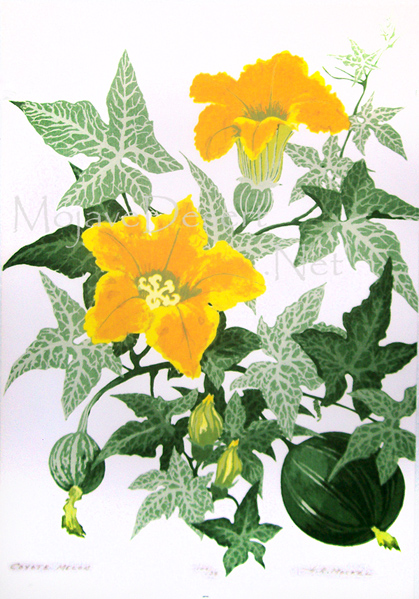
Source: Riverside Metropolitan Museum
The Thousand Year Ballet
Migration- plants migrate. Plants are always looking for ideal conditions, conditions that help them live longer and better. This is a condition of life. Everything living does this. Inch by inch, foot by foot, generation after generation–plant populations move, march on toward better lives in more conducive environments. They adapt. They evolve. They move in the gradual changes of long-term weather patterns. We may not see it in our lifetimes, but we can in the histories find evidence of, and compile; this used to be here, that used to be there, relict populations remain if any. A seed grows here but not there, and a seed will sprout on this side and not that side. A slow dance extending much longer than we can personally experience, but a dance indeed.
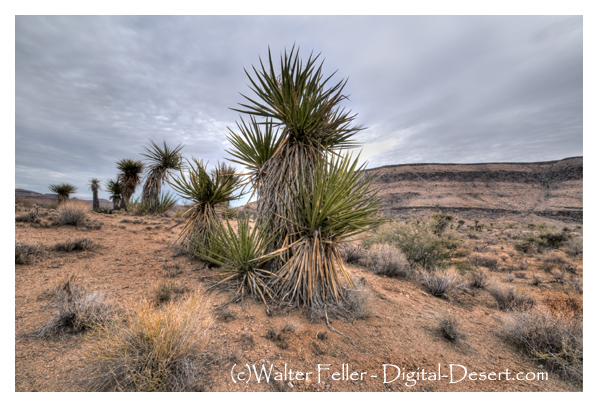
Simply Nature
It is simple, really; the wind storms bring dusk early to the high desert. The airborne dust hastens the sunset, and the sunset goes deep and passionately purple. the wind rests and the day is over. Equilibrium.
The desert wind has played its joke.
Move forward into the forever blue of the “Everything.”
A long night to hunt or be hunted.
By the time the sun has raced around the earth and rises, the game has changed ever so slightly, and some desert creatures will be dead, and some will be fed.
~ W.Feller.
Cream Cups – Wildflowers
Update to cream cup in the wildflower guide:
Flowering early-late spring. Open, grassy areas with loose or disturbed soil or following burns; 0-1000(-2000) m; Ariz., Calif., Nev., Oreg., Utah; Mexico (Baja California). …
Zigzag
Interesting how a zigzag of light against a shadow will catch your eye while you look away from the low sun. Anticipation, is paramount; the shadows roll over the mountain canyons and ridges quickly. Observe it then. Blank everything else out and don’t look away. What you will see will never be the same again. Don’t miss your moment!
If You Ever …
If you’ve ever wondered what a young cottontop cactus sitting in the shade of a hedgehog cactus at the last second or so of direct light during sunset, what that looks like- This is a picture of that.

Cactus of the Mojave Desert
The Basketmaker of the Desert
By MARY BEAL
Nearly every desert visitor knows Evening Primrose—but not all of them know that the white-ribbed “baskets” so often found rooted in the sand are the dried stalks of this lovely white flower which blossoms at night and takes a siesta when the sun comes out….Continued Here
The Creosote Bush: The One and the Many
The creosote bush is truly the unnoticed elephant in the room. If someone were to weigh the biomass of the desert Southwest, this species would certainly possess the highest percentage of life and we would find that a high percentage of all other life in the desert is dependent upon it, yet its importance in the desert environment goes unappreciated by both scientists and artists alike. …
Fog and Wind
 An early morning in the high pass between the Providence and New York mountain ranges is a good place to watch for fog. Not fog as how we think of fog in a normal sense, but fog as when clouds roll over this pass. Bitter and brutally cold in the winter, strafing the ground with a crust of frost the clouds lay down and pick up as fast as they leave. Of course the wind moves it all, and not a gentle wind either. This is a wind so icy it twists one’s soul as it blows through. It is all worth it though–a different kind of solitude–you were the only one to see it and feel it.
An early morning in the high pass between the Providence and New York mountain ranges is a good place to watch for fog. Not fog as how we think of fog in a normal sense, but fog as when clouds roll over this pass. Bitter and brutally cold in the winter, strafing the ground with a crust of frost the clouds lay down and pick up as fast as they leave. Of course the wind moves it all, and not a gentle wind either. This is a wind so icy it twists one’s soul as it blows through. It is all worth it though–a different kind of solitude–you were the only one to see it and feel it.
Adapt or Die – #432
Common names for plants are often what they appear to be:– Rock bush —

Barrel Cactus

There are many different varieties of barrel cactus, but a couple of things pretty much hold true with all of them. First, the taller ones tend to point toward the south. This is due to the fact that for most of the year the sun is more toward the south. Second, it is not a good idea to drink the juice from the cactus when out of water. A couple of reasons for that; one, these cacti are tough, and the perspiration expended to open one of these up would exceed the available water within. Secondly, the liquid will most likely cause a horrible case of diarrhea, further depleting the body of water and accelerating dehydration.
